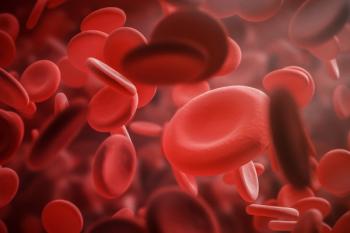
Clinical twisters: Managing hyperglycemia in CAP
Preparing for rounding with your team, you check some patient data.
Preparing for rounding with your team, you check some patient data. You discover Z.T., an 82-year-old woman hospitalized for community-acquired pneumonia (CAP) (S. pneumoniae isolated from sputum culture, penicillin-resistant) treated three days with gatifloxacin (Tequin, Bristol-Myers Squibb) 200 mg daily, is afebrile and wants to go home. Z.T. takes metformin 1,000 mg twice daily and glipizide 10 mg daily. Her SrCr=1.1 mg/dl. Yesterday, her midmorning serum glucose concentration was 400 mg/dl and she was treated with insulin protocol. By late evening, it had declined to 150 mg/dl. What will you recommend to your team today?
Fluoroquinolones are associated with rare dysglycemic events, especially in older, Type 2 diabetes patients with renal insufficiency. Hyperglycemia typically develops after three or four days of treatment and is more common than hypoglycemia. The hyperglycemia mechanism is unclear but is hypothesized as secondary to an unopposed anti-insulin rebound response to an initial insulin surge. Gatifloxacin is indicated for CAP caused by penicillin-resistant S. pneumoniae (likely also macrolide- and multidrug-resistant [MDRSP]).
Z.T. has demonstrated a clinical response and is ready for discharge; however, hyperglycemia may be due to therapy to be continued at discharge. Options include the following: one, converting Z.T. to hepatically eliminated moxifloxacin (indicated for MDRSP CAP), thereby avoiding renal insufficiency issues [however, label lists clinically relevant hyperglycemia in < 0.1% patients]; two, changing to telithromycin (Ketek, Sanofi-Aventis), a ketolide antibiotic with activity against macrolide-resistant S. pneumoniae [not renally eliminated, nor associated with hyperglycemia]; three, continuing gatifloxacin as blood glucose has normalized and fluctuations occur in diabetics with infection.
John F. Mohr, Pharm.D.Assistant Professor of MedicineUniversity of Texas Medical SchoolHouston
Glucose homeostasis abnormalities (GHA) have been reported with quinolones in diabetic and nondiabetic patients. The risk appears much higher with gatifloxacin than with other quinolones. At best, Z.T.'s creatinine clearance is about 40 ml/min. Elderly patients are more susceptible to GHA due to age-related renal function decline that leads to higher serum concentrations of renally excreted drugs. The choice to use a respiratory quinolone for Z.T. is appropriate given the comorbid condition of diabetes and penicillin-resistant S. pneumoniae. An advanced macrolide is not an alternative because the likelihood of resistance to macrolides is high.
An alternative for the treatment of CAP is telithromycin, an oral ketolide. To date, telithromycin has not been shown to cause GHA. It does need to be adjusted for creatinine clearance < 30 ml/min. Assuming adequate diabetes control on current regimen, I'd adjust antibiotic therapy. The respiratory quinolones and telithromycin are comparably priced. Use of levofloxacin 250 mg (dose-adjusted for renal function) by mouth daily for seven more days is a reasonable alternative. Advise Z.T. to phone her doctor if blood glucose reaches > 180 mg/ dl, or if respiratory symptoms worsen.
Kam L. Capoccia, Pharm.D., BCPSClinical Assistant ProfessorSchool of Pharmacy University of WashingtonSeattle
Newsletter
Pharmacy practice is always changing. Stay ahead of the curve with the Drug Topics newsletter and get the latest drug information, industry trends, and patient care tips.




